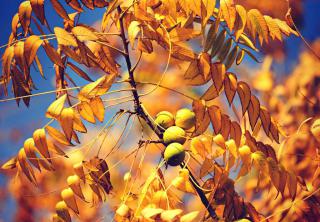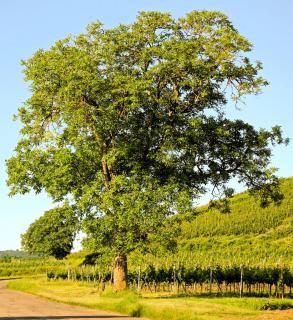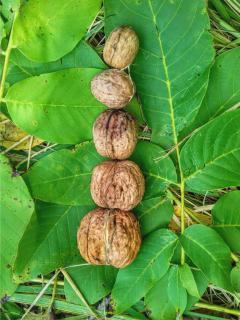

The walnut tree is ornamental and a fantastic fruit-bearer.
Key Walnut facts
Name – Juglans regia
Family – Juglandaceae
Type – fruit tree
Height – 50-85 feet (15-25 meters)
Climate – temperate or warm
Exposure – full sun
Soil – deep, ordinary, well-drained
Foliage: deciduous – Flowering: end of spring – Harvest: early to mid-fall
Growing and caring for it from planting to pruning will increase your harvest and speed the growth of your walnut tree.
If the most proper timing is to be chosen, plant your walnut tree in fall to speed root development up before the winter frost spells.
 It can also be planted in spring though, when purchased in a container, or also in summer as long as periods of sweltering heat are avoided.
It can also be planted in spring though, when purchased in a container, or also in summer as long as periods of sweltering heat are avoided.

This particular practice must thus be reduced to the utmost, because it can damage the tree and alter the upcoming harvests.
If you do need to prune because the tree is growing too large, perform the pruning during the month of September.

Walnuts are harvested as early as September and sometimes until November depending on where it’s planted.
 The signal to start harvesting is when the husk has just started splitting apart.
The signal to start harvesting is when the husk has just started splitting apart.Once they’ve been harvested, the fresh walnuts can be nibbled within at most a couple weeks.
Another option is to dry them off in the sun after having pried the husk away. This prepares them for long-term storage, easily up to 1 or 2 years.
The walnut tree is, all in all, a very elegant tree, well balanced, and for which the blooming will color your garden at the beginning of spring.

There are some varieties that do flower a bit later which are recommended in locations located farther North, to avoid losing the crop and blooming to late spring frost spells.
The walnut husk is the outer, coarse shell that surrounds the walnut itself. It doesn’t have any culinary value, but it is used as a pigment when producing oil-based paint colors.
Freshly picked walnut as well as dried walnut is used for cooking, and oil can be extracted from it, too.
As mentioned above, the impressive size a walnut tree can reach makes it virtually mandatory to plant it in a wide open space.
This fact, however, will make it a great shaded spot for you to relax even in the midst of the hottest summer days!
Vital info is missing: how fast does it grow?
In the first 3 years, in the next 3 years and so on.
That’s a good point, but it is rather difficult to give even a rule of thumb to answer this. For example, when conditions are idea – more than 3 feet of rich soil, full sun, no weeds, and little wind, the black walnut species can grow up to 4 feet (120 cm) every year!
In year 1, expect growth of about 2 feet (60 cm), and a two-year old sapling would be 3 to 4 feet (up to 120 cm). Depending on conditions, growth is usually from 2 to 4 feet every year until it reaches it adult height, usually at around 20-30 years of age.
In reality, growth is rarely that rapid, especially for the fruit-bearing walnut (or common walnut).
Thank you for sharing this information